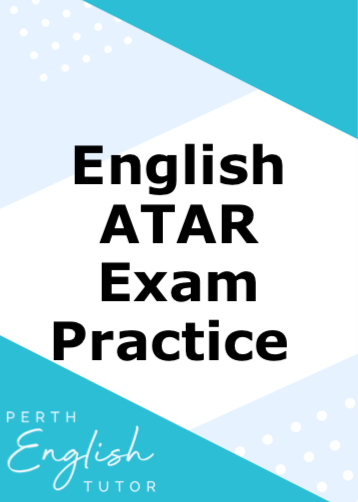The secret to doing well in your English essays, comprehension tests and exams, is knowing which conventions to incorporate into your discussion. One particular type of convention is the narrative convention. Narrative conventions, or narrative techniques, are important to understand whenever you are reading a novel or a short story, and you need to analyse it after you read it. By understanding what narrative conventions are and why they are used in certain ways, you will be able to better answer your questions.
Here is an extensive list of narrative conventions and language features for English and some examples of why they are used and how they are relevant.
Characterisation
Setting
Structure
Syntax
Tone
Style
Dialogue
Emotive language
Descriptive language
Narration
Metaphors
Similes
Personification
Hyperbole
Imagery
Allusion
Symbolism
Diction
Repetition

WACE English Practice Exam
This WACE English Practice Exam will help you practice for your upcoming exam.
The practice is divided into the three sections of the exam; Comprehending, Responding, and Composing.
The guide will help you "flex" those muscles and give yourself a strategic boost.
Download today!
Send download link to:
Characterisation
Characterisation is important to analyse in a text as it reveals a lot about the message of the text. The characters are usually the vessel by which the author tells the story. Are the characters typical of a genre? Do they fit a certain archetype? Are some characters good and some evil?
Setting
An understanding of the setting will assist you with all different types of narrative texts. In certain genres such as wester and horror, the setting is very fundamental. However, no matter the text, the setting is going to play a key role.
Structure
How has the text been structured? Is there a flashback? Does it loop? The structure of the text is important in identifying how the author wants you as a reader to uncover his message. This is highly important in short stories, also.
Syntax
Syntax is the way that words and phrases are put together in a sentence. Sometimes authors will adhere to syntax and sometimes they will play around with the syntax, which is just as significant. Take a look at the syntax and try to understand what is going on with the author’s writing.
Tone
The tone of a novel or story is a big determinant in the message of the narrative. It is important to identify tone, whether it be serious or sarcastic.
Style
What style has been employed to write this narrative? This will require you understand the key terminology surrounding style.
Dialogue
Dialogue is anytime that someone speaks within your narrative. It can be very telling about a number of things and can reveal things about your characters, in a different way to your narrator.
Emotive language
The use of emotive language is very significant is it positions the reader to “feel” what the author wants them to. This is important when talking about serious issues.
Narration
First-person, second person, third person limited and third-person omniscient are all different methods of an author telling a story. Each of these is significant in their own right.
Metaphors
A metaphor is a useful language tool that compares two things that have nothing in common. E.g. Lost in a sea of nameless faces.
Similes
A simile is when something is said to be like something else. E.g. Her smile was as bright as a sun.
Personification
Personification is when an inanimate object is assigned with a human-like quality. E.g. The daffodils danced in the breeze.
Hyperbole
This is an exaggeration of the fact. E.g. She was so hungry she could have eaten a horse
Imagery
A great author can conjure up pictures in your mind through the use of imagery. This is a very descriptive language that paints a visual picture.
Allusion
An allusion is a reference to something else. E.g. Bec was the Trojan horse to Marta’s social group.
Symbolism
Symbolism can be anything from a dagger to colour and usually has a hidden meaning.
Diction
Diction is the choice and use of words in the writing and can be highly significant. Look for unusual word choices and anything that seems significant and what those particular words connote.
Repetition
When words or ideas are repeated in a text, it usually means that the author is trying to point your attention to that thing.
Understanding these techniques and conventions is fundamentally important to your high school English grades. If you need more help with figuring out how to annotate or analyse your texts, contact us today.


Comments are closed.